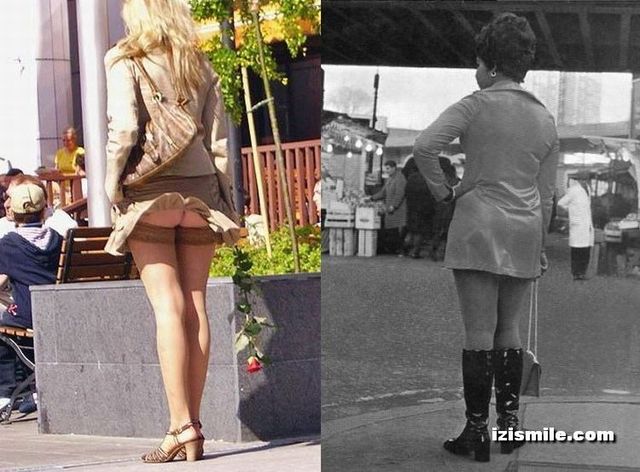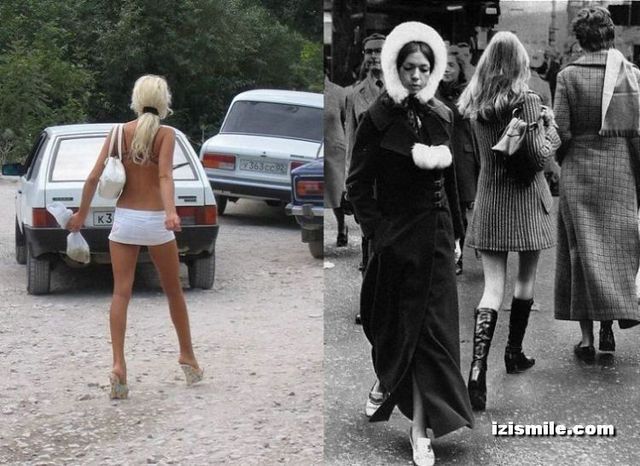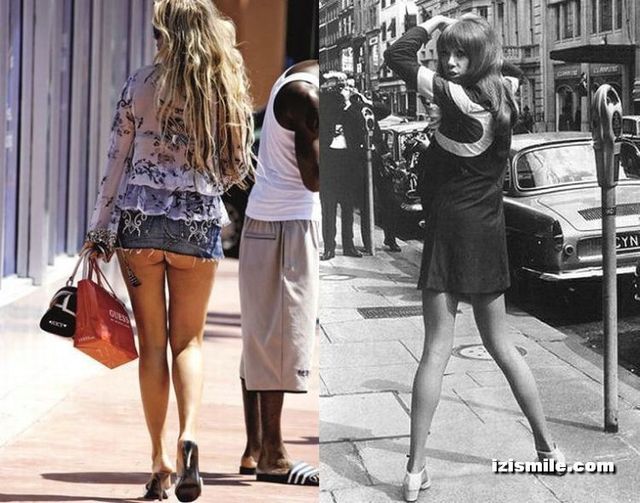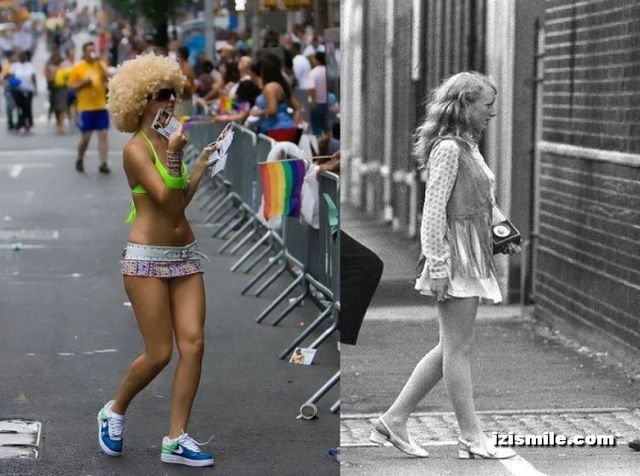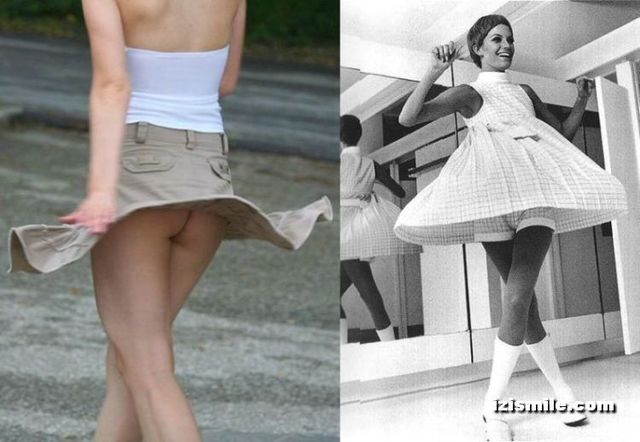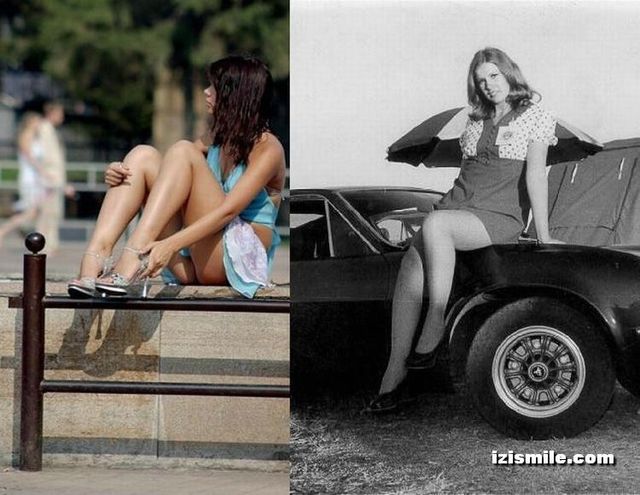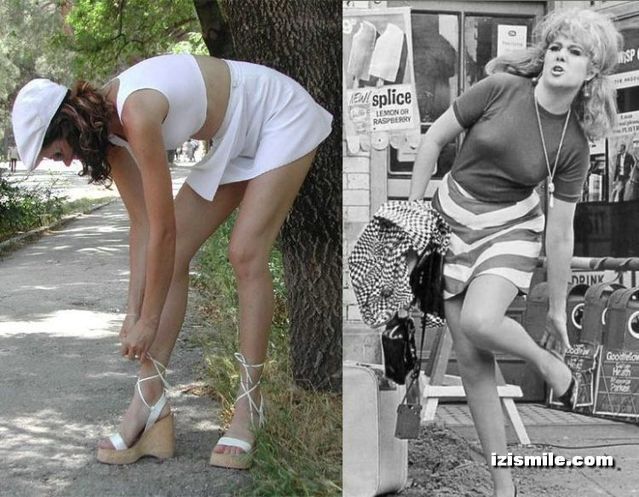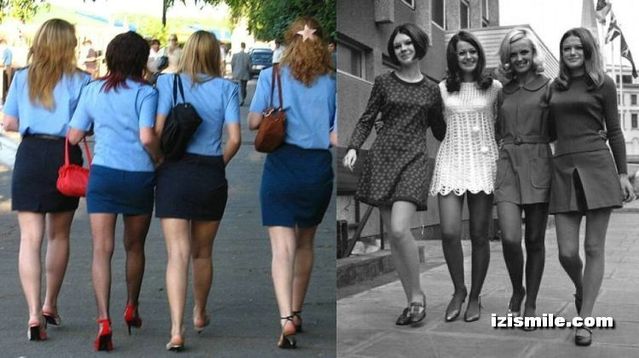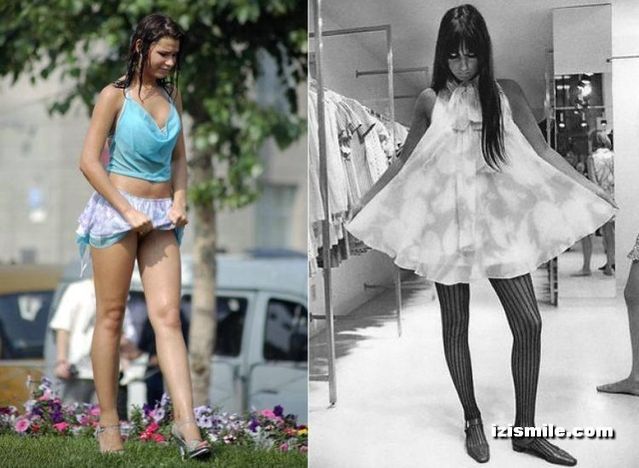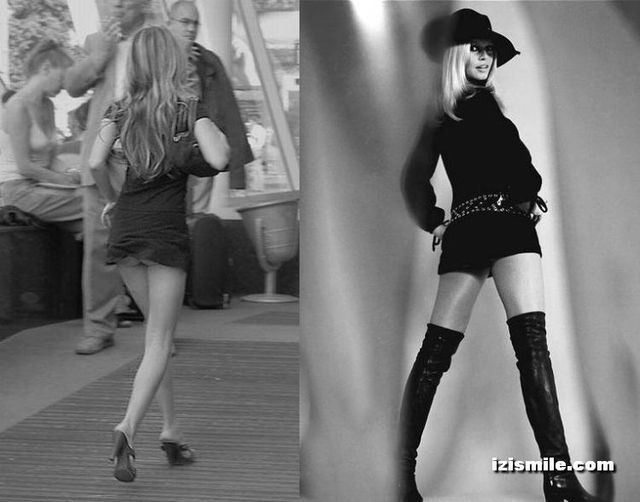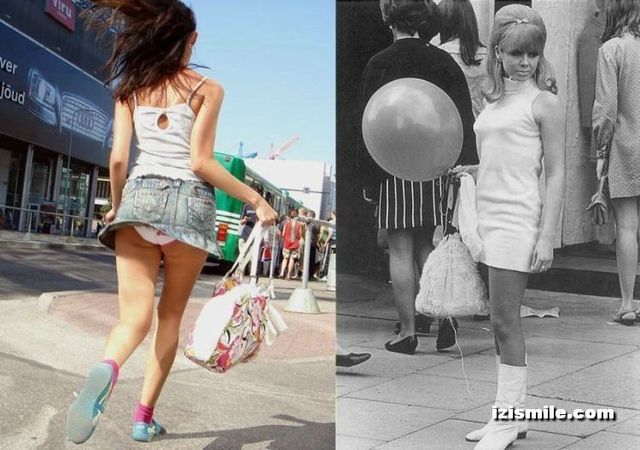Fashion Revolution
A History of the Miniskirt
<tbody>
</tbody>
A History of the Miniskirt
| The 1960s was a politically charged decade of revolution and change. Apollo 11 became the first capsule to land on the moon, the Civil Rights Act of 1964 became law, Vietnam was raging, Beatlemania was sweeping the world, birth control pills hit the market, and a new cult of youth, known as “Youthquake,” had radically taken over many areas of life. In the midst of these dramatic political and cultural changes emerged one of the most enduring and controversial icons of the era: the miniskirt (or mini skirt). Existing, surprisingly, since ancient times, this small and sexy piece of fabric has embodied some of the most fascinating paradoxes of our times as it suggests both empowerment and vulnerability, independence and a desire to please, an attempt to cover and to reveal, maturity and playfulness, and liberation and exploitation. Simultaneously condemned and loved, the miniskirt exploded into the political landscape and had women (and men) suddenly paying attention to what had been hidden years before—a woman’s legs. In the Beginning Was . . . the Miniskirt High in the mountains in some of Europe’s oldest villages, archaeologists have recently unearthed ancient figurines dating between 5400-4700 B.C. What is remarkable about the figurines is not only their age, but also that the female figurines appear to be beautifully dressed in miniskirts not unlike the fashionable miniskirts of the 1960s, prompting some scholars to speculate that miniskirts were common in the earliest of civilizations (Derbyshire 2007). Interestingly, these figurines are not the only evidence of “ancient miniskirts. For example, an ancient Egyptian fresco shows a female acrobatic dancer wearing a “mini skirt” seemingly made out of cotton that shows off both her hips and her legs (Gandolfi 1989). Early Twentieth-Century Skirts and Sowing the Seeds of Change While the miniskirt may have existed as long as civilization has, it is probably only recently that it has evoked powerful political and cultural implications. In the mid 1800s, women in Europe and America were generally believed to be the weaker and more vulnerable sex. Politics, business, and physical activity could be dangerous for women, and tight corsets with long, restrictive skirts generally reflected these beliefs (Weaver 2003).
<tbody> </tbody> The 1960s and the Politics of the Miniskirt Teenagers Create Their Own Political (and Fashion) Space Before the 1960s, young women had been expected to dress in the style of their mothers, which was usually loosely based on Parisian couture. For example, as late as 1962, a Sears catalog portrayed mothers and daughters as “patchwork pals” who were overjoyed that they are wearing identical dresses. Looking back on the late 1950s, the English designer Sally Tuffin remarked, “There weren’t any clothes for young people at all. One just looked like their mother” (Steele 1997). However, by the 1960s, youth protests and demands for individual expression revealed that young adults were gaining a self-conscious awareness of themselves as a distinct and unified group that was able to respond to political events in ways that were different from their parents (Cawthorne 1999). Youngsters felt they no longer needed to follow the rules of bourgeois morality and manners, which they saw as hypocritical and based on double standards. As this young political entity gained a voice, they created a space for a new and distinctive fashion that embodied their own political views—not their parents’. The Miniskirt as an Expression and Tool of 1960s Feminism Growing awareness of feminism also paved the way for a different fashion for women. For example, in 1963, American Betty Friedman published The Feminine Mystiquewhich deconstructed the myth of the happy housewife and expressed the desire of women to explore other roles. In addition, the 1960s saw a dramatic increase in women attending universities and entering the workforce, especially with the advent of the “temp agency” which allowed greater flexibility in when and where a woman wanted to work. This decade also saw laws passed that helped protect and empower both married and divorced women (Diamond and Diamond 2006). Perhaps most important was the advent of the birth control pill, which removed fears of pregnancy and helped usher in the sexual revolution (Cawthorne 1999). The image of a woman was beginning to dramatically shift from being a wife and mother to a young, single, carefree girl proud of her sexuality and confident with her power. The miniskirt would express—and serve as a tool for—this growing woman’s movement. A New Class of Young Consumerism The young generation was indeed growing up rebellious and articulate—and with more money than they’ve ever had before. Young people suddenly became a powerful class of consumers who demanded a fashion that matched the spirit of youth. Consequently, the whole structure of the fashion system was challenged from the youth in the streets as the prestige of “couture” came under attack or, worse, seemed irrelevant (Cawthorne 1999). Upstart designers and boutiques began to cater to a new youth market that could now buy what they wanted—and to older women who began to scramble to look like their daughters. “The Mother of the Miniskirt” : Mary Quant
<tbody> </tbody> “The Lord of the Miniskirt” : André Courrèges Quant probably deserves primary but not exclusive credit for the miniskirt. One French designer also caught the spirit of the era and did for France what Quant did for England (and America)—André Courrèges. Though he began to experiment with hemlines as early as 1961, Courrèges showcased his futuristic, space-age minimalistic dresses which scandalously fell above the knee in late 1964. Like Quant, Courrèges shocked the fashion world. Unlike Quant, he tended to design his skirts with more sophistication and maturity, which, in turn, helped make the miniskirt acceptable to French haute couture (Cawthorne 1999). While Courrèges would later claim that he invented the miniskirt, Quant dismissed his claim, saying “It wasn’t me or Courrèges who invented the miniskirt anyway—it was the girls in the street who did it.” Though the debates between Quant and Courrèges can be amusing and many scholars tend to “skirt” the issue, both Quant and Courrèges appropriated the trends of earlier fashion houses and both took advantage of the greater social changes that were occurring around them. Regardless of who really “invented” the miniskirt, both Quant and Courrèges deserve credit for revolutionizing and enriching the fashion world with their daring hemlines (Diamond and Diamond 2006). The Mini Goes International Quant’s influential position in the heart of “Swinging London,” Courrèges’ influential position in the more sophisticated Parisian fashion world, and the mini’s easily washable fabric that busy teenage girls were apt to buy helped the miniskirt become a major international trend. The miniskirt’s international acceptance was also boosted when Jean Shrimpton, a popular model, unwittingly caused an international stir in late 1965 when she wore a miniskirt with no stockings, hat, or gloves at the Melbourne Cup Carnival in Australia (Steele 1997). The classic photo of that day showed a dramatic contrast: behind the young, carefree, and beautiful Shrimpton was a group of disapproving middle-aged women dressed in their very proper twin sets and pearls. Shrimpton’s apparent disregard for the bland status quo made a trend-setting fashion statement around the world (in non-communistic and non-Muslim countries, at least). Accessorizing the Miniskirt It wasn’t just moral outrage that followed the miniskirt, but also fashionable accessories. Accessories included zip-up knee high boots made of stretch vinyl (“kinky” or Courrèges’ “go-go” boots). Tights and pantyhose replaced awkward nylon stockings and became fashion statements in their own right. Actually, tights and pantyhose are what really made the miniskirt possible because they liberated the woman from garter belts and from trying to keep the lines on old-fashioned stockings straight (Olsen 1999). By the late 1960s, miniskirts were being made of see-through fabrics and other loose crotchet materials—which, in turn, made underwear an important new accessory in fashion as well. The “Lolita Look”
<tbody> </tbody> Decline of the Mini in the Late 1960s The miniskirt of the “swinging 60s” lasted until the end of the decade. Throughout, fashion designers created some new and extreme variations in order to keep the excitement alive. For example, Paco Rabanne launched his plastic chain-mail miniskirt in 1966 and then the throw-away minidress. Despite this creativity, the mini eventually fell out of fashion when disillusionment about Vietnam became more widespread and the future looked less positive. With increasingly political despondency, fashion became a little more nostalgic and hemlines fell back down to the ankle in 1969 in a style called the “maxi,” which was the longest hemline since 1914 (Cawthorne 1999). In addition, while the miniskirt initially was seen as liberating women, the development of terms such as “dolly birds” tended to objectify women, and feminists realized that the miniskirt had great potential to be more exploitive than liberating (Reilly 2003). With the feminist movement in full swing by the early 1970s, minis (whose hemlines had nowhere to go but down, anyway) fell into disfavor. The Late 1970s Punk Revival of the Mini While the miniskirt fell out of fashion in the early 1970s, the punk movement at the end of the decade helped revive the miniskirt, thanks in part to female rock stars such as Debbie Harry (Blondie) who were fond of wearing miniskirts on stage. The punks were motivated by anti-fashion and tried to avoid mainstream trends, which were considered bourgeois, bland, and over-indulgent. Influenced by punk designers such as Vivienne Westwood and Malcolm McLaren, whose shop SEX sold the fashion, the mini was reincarnated in black leather and PVC. The mini was also now often worn with ripped fishnet tights and took on a slightly “trashy” overtone that reflected the “whatever” attitude (Cawthorne 1999). In an ironic twist of fashion, once the punk look was picked up by designers, the punk movement’s anti-establishment edge became mainstream itself. 1980s and 1990s: The Corporate Miniskirt
<tbody> </tbody> Mini Skirts around the World For the most part, the miniskirt has been accepted in the Western world; however, not all countries and cultures embraced the short skirt. Inmany African countries, the miniskirt was seen not only as a corrupting influence of the West but alsoof the modern world. For example, in Tanzania in 1968, at least one barmaid was stoned by a mob that supposedly disapproved of the shortness and tight fit of her miniskirt (Ross 2008), and politicians argued that the spread of AIDS would be halted if women would stop wearing miniskirts (“It’s in Our Hands”). And just this year, a strict Muslim father hired hitmen to kill his 21-year-old daughter because she refused to stop wearing miniskirts. After he paid the gangsters the equivalent of about $3,000, they kidnapped and shot her in the head on the outskirts of St. Petersburg, Russia (“Daughter Killed”). Twenty-first Century Miniskirts While the miniskirt has been met with disapproval and even violence, the tiny skirt shows no signs of disappearing. On the contrary, the miniskirt is still heavily featured on Western catwalks and in fashion magazines—and it is often shorter than ever. The phone company Samsung even introduced a new cell phone in 2008 called the “Miniskirt Season 2” which, while looking nothing like a miniskirt, is targeted toward women who like to “Talk, Play, Love” (Evans 2008). The miniskirt—variously known as the “micro-mini,” “pelmet,” or “bondage” skirt—continues to occupy a fascinating and paradoxical space in the fashion world as it teasingly attempts to cover and reveal at the same time. In all of its contradictions and reinventions, the miniskirt still provokes, challenges, and demands attention from both men and women alike. |
<tbody>
</tbody>








